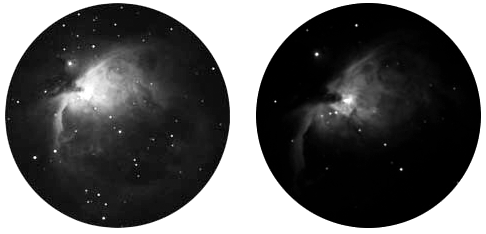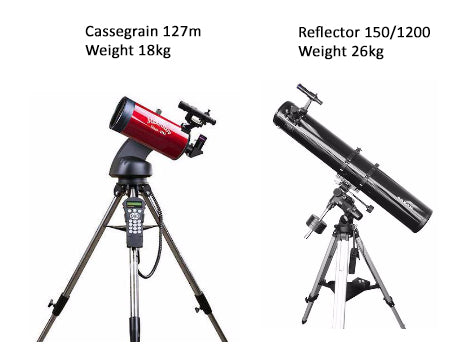Astronomy Telescope Buying Guide
Following is a summary of the key points for consideration when purchasing a telescope for astronomy.


Aperature is the most important technical consideration. The greater the aperture the more light collected.
The light gathering power is proportional to the area of the lens or mirror, which depends on the square of the radius, so it increases rapidly with increased aperture. For example, a 200 mm telescope does not gather twice as much light as a 100 mm telescope -- it gathers about four times as much. The more light collected the brighter and clearer the view.
Most astronomy objects are faint, not small and need more light to see and not greater magnification.
To the right an illustration showing the actual size of the Andromedia Galaxy in comparison to the moon.

A telescopes magnification can be changed depending on the eyepiece chosen.
Maximum useful magnification is approx. 2 times the aperture in mm, for example a 130mm telescope can usefully magnify up to 260 times.
Less magnification tends to be preferred by visual astronomers because you get a wider / fuller field of view and can see a more complete object. Additionally atmospheric conditions often distort the view at high power
The Right image is at increased magnification. Increasing the magnification makes the image larger but the image gets dimmer and the field of view gets smaller.

Portability also needs to be considered
As the aperture increases, often too does the size of telescope. The Cassegrain design reduces the size.
Also, the easier a telescope is to move and set-up the more you will use it.
Mounts
Manual Mounts - The best manual mounts for an astronomy telescope are Equatorial (EQ) or Dobsonian.
EQ mounts are tilted and move in an arc (so are far easier to track stars and planets) Dobsonian mounts have the telescope sitting on a base that swivels left and right. Collapsible ones are also available making them more portable.
Computerised / Wifi Mounts and GoTo Systems these automatically move your telescope to any astronomical object you select.
This is usually closely related to aperture – the bigger the aperture the greater the price. Astronomy telescopes range in price from about $300 for an entry level model to many thousands.
So.... What type? Following is a summary of how each design compares on aperture/price and portability.

